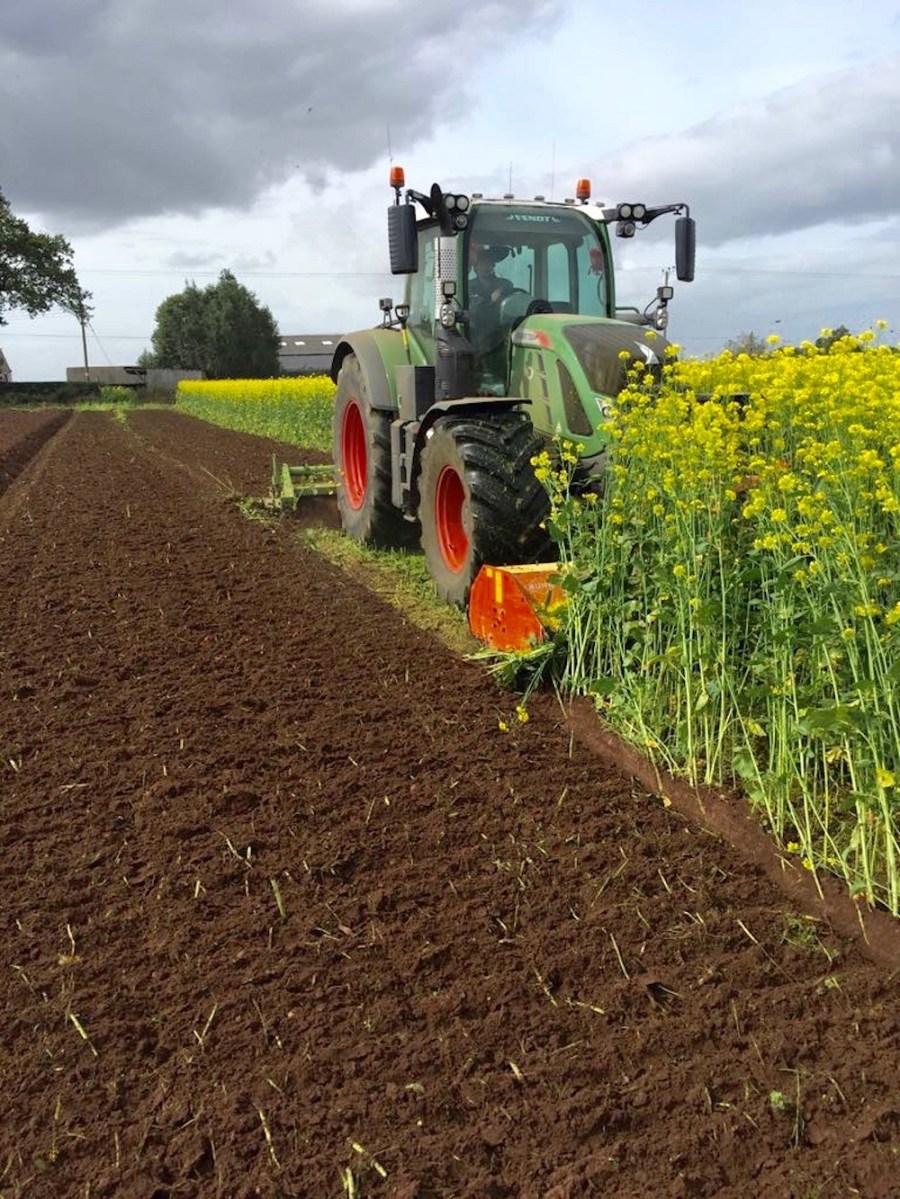A new summer-sown biofumigant mix is available this year. CPM finds out just how hot the Vindaloo is.
The golden rule is to chop the crop thoroughly and as finely as possible.
By Rob Jones
Summer Vindaloo contains the hottest mustard varieties and very hot rocket. As well as their ability to turn up the heat, the constituent varieties have also been selected for their rapid growth, says Shrops-based Agrovista agronomist Andrew Wade.
The spicy mixture has the potential to outperform conventional autumn-sown, overwintered varieties in the suppression of potato cyst nematode. The mix is aimed at growers, especially on trickier land, who prefer or need to complete their deep cultivations before winter sets in, he says.

Andrew Wade says it’s best to allow PCN cysts to deteriorate for a few years before growing a biofumigant crop.
“As long as Summer Vindaloo is sown early enough, in July or early Aug, it can be incorporated in Oct and will deliver at least as powerful a punch as the more traditional over-wintered mixes.”
Sowing at that time will ensure the plants develop enough bulk to deliver a high enough dose of isothiocyanate (ITC) gas, which is released when the green material is macerated and incorporated into the soil, reducing the viability of PCN cysts.
“Summer Vindaloo can follow crops like winter barley or early carrots. Whole-crop cereals or rye are also ideal,” says Andrew.
The mix has been developed in conjunction with plant breeder Joordens Zaden (part of RAGT) in Holland, as a result of an extensive trials network and PhD research pioneered by Agrovista agronomist, Luke Hardy.
Summer Vindaloo must be established well to ensure optimum results, he adds. “It’s important to alleviate compaction before drilling, and sow into a fine, firm seedbed. The crop may require fertiliser to maximise its biomass and we’d typically recommend 90kg/ha of N and 30kg/ha of sulphur. Trace element need should also be considered and then applied where required,” he advises.
Provided it gets off to a good start, the crop can produce 80t/ha of fresh weight within three months. “The golden rule is to chop the crop thoroughly and as finely as possible. We’ve found machines fitted with knife flails do the best job,” he says.
To get the desired result, incorporation to a depth of 15-20cm must follow the chopping process immediately. “Our research shows the best results come from a spading machine. Another option, which is nearly as good, is to rotavate the green material in and plough within five minutes to ensure the biomass is thoroughly incorporated throughout the soil profile before finishing with a roll,” advises Andrew.
Time is of the essence when it comes to incorporation as the ITC gas is produced as soon as the green material is macerated. The process requires moisture, so in dry conditions some irrigation may be required before chopping the crop for optimum results, he points out.
“Under the right conditions gas will start to be produced in a few minutes and will have done its job within 12 hours. This is the reason why it’s so important to incorporate macerated biomass quickly,” he explains.
The summer mix tends to be stronger than autumn-planted equivalents because it produces more glucosinolates. “As well as its higher concentration of glucosinolates, the plant material is also lush and softer than in over-wintered crops, which means its cells crush more easily. Warmer soil also provides a better environment for the gas to work,” he adds
Further work in the Shrops trials has revealed that biofumigation is best carried out a year or two before the next potato crop rather than straight after the one that’s just been lifted.
“PCN cysts seem to be very tough in the first year but they appear to weaken as they age, possibly around the feeding point, and this helps get more gas into the cyst. So we’ve moved away from fumigating newly-formed cysts, preferring to wait for some cyst deterioration to take place,” he comments.
Further biofumigant crop benefits
As well as helping to control PCN, green crops grown for biofumigation purposes deliver several additional benefits that can help produce higher yields of better quality crops.
- Increased soil biological activity
- Improved soil structure
- Increased water holding capacity
- Increased water percolation
- Reduced runoff
- Reduced diffuse pollution
- Improved nutrient availability
- Recycled nutrients overwinter
- Better workability and timeliness of cultivations
- Adherence to Cross Compliance.
Trap crops in trials
Another new study in Agrovista’s Shrops trials is investigating trap cropping. This involves growing plants that produce a similar exudate to potato roots, fooling the PCN into hatching. The aim is to reduce the levels of PCN because under a trap crop, the larvae aren’t able enter its roots, so die without completing their lifecyle.
Growers can see examples of trap crops and biofumigant crops at an Agrovista Open Day, to be held on one of the Shrops trial sites in Sept. Details will be available from local agronomists. There’ll also be demonstration plots at Potatoes in Practice at the James Hutton Institute’s Balruddery Farm, Dundee on 9 Aug 2018.




